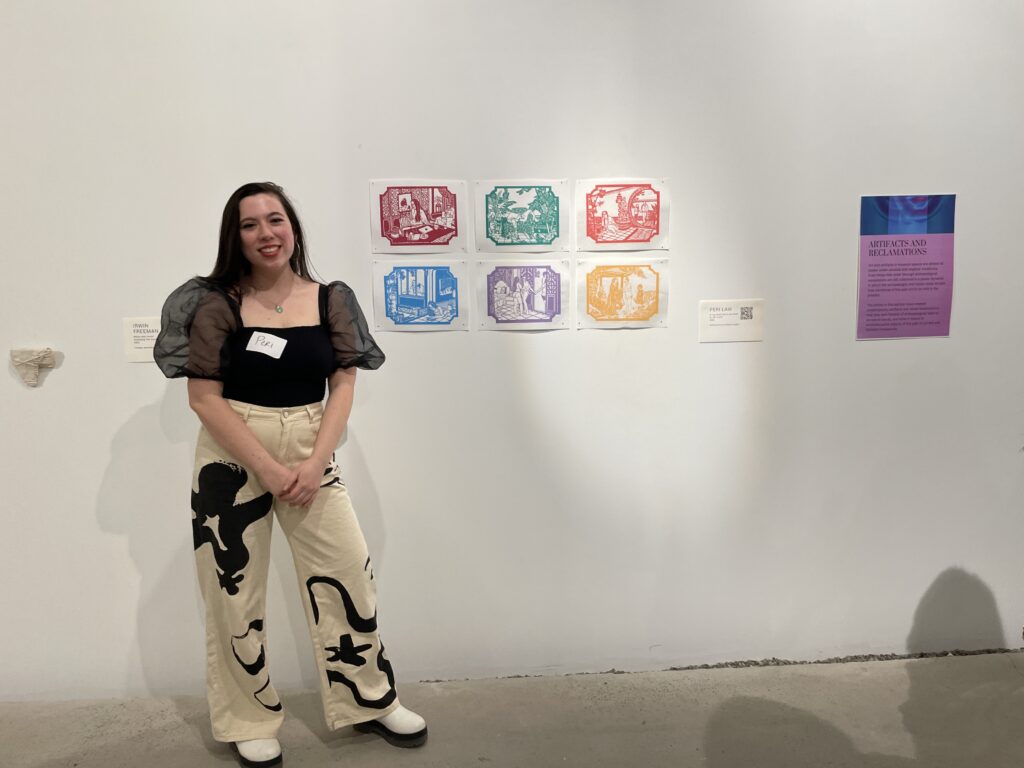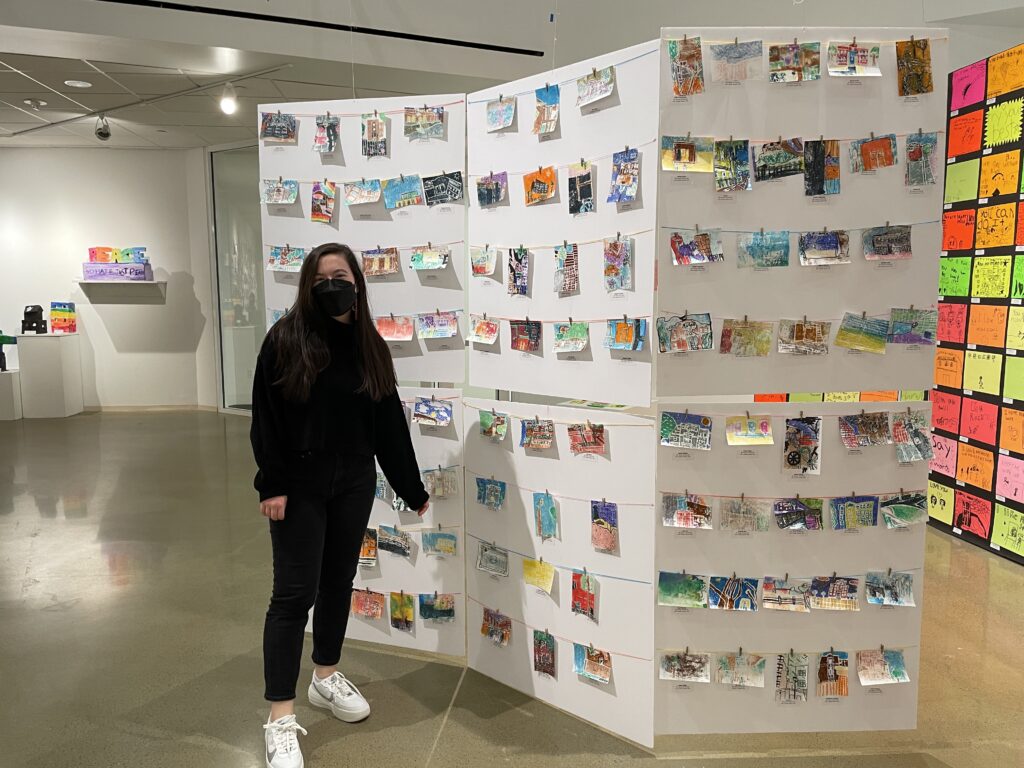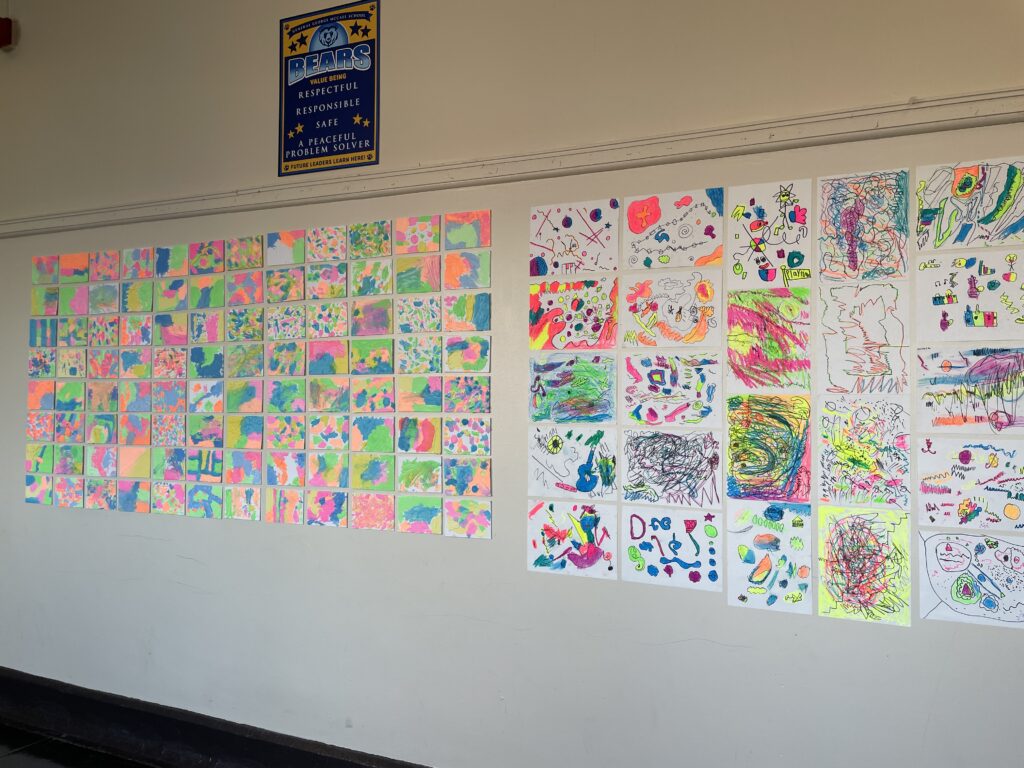Personal Artistry Reflection: Peri Law

I’m Peri Law, a printmaker and mixed media visual artist. My artwork appropriates from my multiracial heritage by recreating domestic scenes and revising objects to reflect the global imperialism that soaks my bloodline. I primarily create screen prints and relief prints that feature myself in fictionalized reclamations of the past and present.
During my first year of service, I saw my personal artistry and teaching artistry as separate practices. Education was a brand new field to me, and printmaking can be challenging to bring into the classroom because it requires particular materials and techniques that aren’t often suited for elementary students. In university, I studied studio art and art history. I also have experience in art museums, with both curation and education. My education and background have immensely impacted my teaching and personal artistry. Because of my art history background, I’ve learned how to analyze art through close looking exercises. I’ve brought these exercises into the classroom to help the students create deeper connections to the art. Additionally, my museum experience has sparked the institutional critique that runs throughout my body of work. I’ve recently started to reconcile my personal artistry and teaching artistry, noticing that the concepts in the lessons I teach spring out of the ideas that drive my personal practice. My artwork is centered around identity, appropriation, and reclamation of power and objects. As a teaching artist, I try to center projects on exploration of identity, to give kids the agency to decide what they value.

The very first lesson I taught as a teaching artist was on appropriation, which in art is “the practice of artists using pre-existing objects or images in their art with little transformation of the original” (Tate Modern’s definition). Because appropriation is prolific in our culture, I wanted my students to be intentional in the way they consume media. I had my students research artwork from the Barnes Foundation and paint directly on top of reproductions of the work. Their paintings evolved into contemporary recreations or critiques of the original work. This year, I’ve transformed my lesson on appropriation to focus on mining from historical text to create abstracted text paintings. The exploration of identity that exists in my personal art is something I’ve also adapted for my classroom projects; by having students create calligraphy scrolls to manifest their goals for the year and Tết inspired vases that center identity and culture.
My first attempt at bringing my printing techniques into school was in the winter of my first service year with a Lunar New Year project centered on creating printmaking patterns out of styrofoam stamps. I’m so used to my way of printmaking, using sharp knives and linoleum, that I struggled to teach this simplified method. It’s difficult to translate something that I’m really knowledgeable about into a step-by-step method that students can successfully do their first time. It’s a skill that I’m continuing to work on. Despite the challenges of bringing my art form into the elementary school classroom, I’ve continued to develop modified versions. Over the summer, I was awarded a scholarship to attend Penland School of Craft and Design. There I studied mokuhanga, a traditional Japanese woodblock printing technique that was used by the renowned printmaker Hokusai who created the Great Wave off Kanagawa. This process involves carved wood and watercolor. In the following autumn, I adapted a lesson from my site supervisor to lead a printmaking project “36 Views of McCall Elementary” which cites Hokusai’s 36 Views of Mt Fuji as the inspiration. To complete this project we used a form of monotype printmaking with foam sheets and colored markers. This was a modified, kid-friendly version of the process that I had learned over the summer. To help students compare and contrast the technique, I even brought in my carved examples into the classroom. Outside of the large classroom projects, I’ve delved deeper into my interests with art club, where I taught students relief carving, indigo dying, and even bookbinding. Students can tell when their teacher is excited about a topic, so it’s a joy to be able to share these forms of artmaking with them.

I believe that teaching elementary art should be multidisciplinary. My experience as Senior Resident Teaching Artist has given me the space to explore other art forms that I’ve neglected in my pursuit of mastering print. I discovered that students respond really well to clay and 3D art. This inspired my current interest in ceramics, particularly handbuilding techniques which I used to sculpt creatures and vessels. These objects were created as project samples and manifested as the next step of my exploration with fictionalized objects in my art practice. It’s been personally liberating to explore art in this new context. In addition to 3D work, many of the projects I teach are mixed media collage based. I feel the mixed media lessons offer students a great way to discover different mediums and create striking designs. Working with students in this way has influenced my own body of work, which has recently shifted towards mixed media pieces, utilizing printmaking as a material rather than the final product.
Balancing my personal artistry with my service year has been challenging. It is particularly difficult to find time to create art after teaching all day when you’re already exhausted. To maintain my personal art practice, I’ve had to prioritize it, by staying on top of my service requirements during weekdays to then set aside time on weekends to get into the art studio. During my service with ArtistYear, I also became a Fellow (and later a board member) at the Soapbox Community Print Studio. The Soapbox became a space where I dedicated my time to become a better printmaker. I also take workshops and evening classes at Fleisher Art Memorial, a local community art school, which feeds my desire to learn. Over the past year, I was able to really hone my screenprinting skills and produce award winning prints that have been on display at local galleries in Philadelphia. This led to several prints being purchased by the Library of Congress. By cultivating a sense of community through my connections in printmaking and teaching artistry, I’ve come to appreciate Philadelphia. In balancing my role as a teacher and a creator, my personal artistry has grown in exciting ways.
Peri Law has had a passion for the visual arts since she was little. Both her love for art history and desire to pursue art as a career were sparked as a senior in high school. She is a visual artist who uses printmaking and mixed media to explore the liminality of multiracial identity, personal, cultural, and multigenerational memory, and the nuances of mental health. Peri is a Senior Resident Teaching Artist, serving a second year in Philadelphia, PA. You can view more of her work on Instagram at @perijlaw.